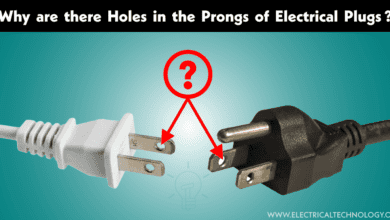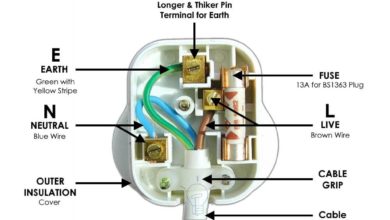Power Plug
-
Electrical Wiring
What is the Difference Between 15-Amp and 20-Amp Outlet?
Difference Between 15-Amp and 20-Amp Outlets and Receptacles Electrical wiring installations, equipment, devices, and other electrical systems for residential and commercial applications in the United States differ significantly in complexity…
Read More » -
Protection
Why is the Long Prong Neutral Instead of the Narrow Prong?
Why is the Wide Prong and Slot Designated as Neutral Instead of the Narrow Prong and Slot in a Plug and Outlet? Engineers typically avoid making arbitrary choices when designing…
Read More » -
Protection
Why is the Neutral Prong or Slot Wider on a Plug or Outlet?
Why is the Neutral Prong and Slot Longer than the Hot Prong and Slot on a Plug and Outlet or Receptacle? Although the electrical power supply and distribution system in…
Read More » -
Protection
Why are there Grooved Slots in the Pins of Two Pin Plugs?
Why are the Pins are Slotted in the 2 or 3-Pin Plugs? Threaded slots are commonly found in Type A, Type B, Type C (Europlug), Type E/F, and Indian standard…
Read More » -
Protection
Why Do Prongs in Electrical Plugs Have Holes in Them?
Why Do Electric Plugs Have Holes in the Prongs? As you may have already noticed the two little holes near each prong’s tip in an electric plug. If not, there…
Read More » -
Electrical Wiring
How to Wire a UK 3-Pin Plug? Wiring a BS1363 Plug
Wiring a BS1363, 3-Pin Plug Safely and Correctly What is a UK 3-Pin Plug? A UK plug, also known as a British Plug, Type G Plug, or BS1363 Standard Plug…
Read More » -
Protection
Why is Earth Pin Thicker and Longer in a 3-Pin Plug?
Why is Earth Pin Longer and Larger in a 3-Pin Plugs? We know that electricity is our best friend as well as the worst enemy because if you give it…
Read More »







